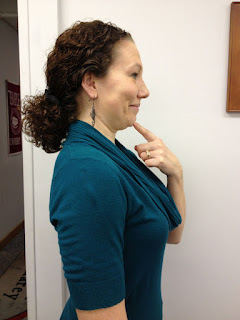By Dr. John A. Papa, DC, FCCPOR(C)
The
musculoskeletal (MSK) system includes the muscles, tendons, joints,
and bones of the body. Many nutrients
contribute to the healthy functioning and integrity of the MSK system. Included below is a summary of 5 common
nutrients that significantly contribute to MSK health.
1. WATER brings vital
nutrients to muscle tissue to support movement and decrease the risk of cramps
and strains. Water also eliminates waste
products and toxins from the body and helps to protect our joints by providing
lubrication and cushioning. The
consequences of inadequate water intake/dehydration include: muscle and joint pain, cramping, and fatigue. A general rule of thumb to follow is to consume
0.5-1 litre
of water daily for every 50
pounds of body weight.
 2. CALCIUM is best
known for building strong bones. It is
also needed for muscular growth and contraction. A deficiency in calcium status can lead to
aching joints, muscle cramps, and osteoporosis.
Foods such as milk, yogurt, and cheese are good sources of calcium but
may not be suitable for individuals sensitive to dairy products. Other healthy foods high in calcium include
pinto, navy, red and white kidney beans, sesame seeds, almonds, and dark leafy
vegetables.
2. CALCIUM is best
known for building strong bones. It is
also needed for muscular growth and contraction. A deficiency in calcium status can lead to
aching joints, muscle cramps, and osteoporosis.
Foods such as milk, yogurt, and cheese are good sources of calcium but
may not be suitable for individuals sensitive to dairy products. Other healthy foods high in calcium include
pinto, navy, red and white kidney beans, sesame seeds, almonds, and dark leafy
vegetables.
3. VITAMIN D is essential for
helping bones absorb calcium, keeping them strong, and preventing
osteoporosis. Signs of Vitamin D
deficiency may include painful muscle spasms, leg cramps, numbness in the
extremities, bony malformations, and arthritic pain. Vitamin D is naturally found in food sources
such as cod liver oil, salmon, mackerel, tuna fish, sardines, and egg
yolks. Sensible and safe sun exposure is
also an important natural source of Vitamin D.
4. VITAMIN C plays a vital role
in collagen production and tissue repair.
Collagen is the building foundation for many body tissues and is found
in all MSK structures. There is an abundance of Vitamin C in strawberries, citrus
fruits, and vegetables including, red peppers, broccoli, spinach, brussel
sprouts and cauliflower.
5. GLUCOSAMINE
SULPHATE is
a normal element of cartilage matrix and joint fluid and provides the body with
the building blocks necessary to repair joint damage. As we age, our bodies slow down the
production of glucosamine sulphate. Published
research suggests that glucosamine sulphate is beneficial for arthritic
patients, particularly for those individuals with mild to moderate
osteoarthritis of the knees. Some
glucosamine sulphate supplements also contain anti-inflammatory herbs that can
be combined with other nutrients such as Omega-3 fatty acids to help with
arthritic pain.
Sensible eating should include nutritional balance with the
correct proportion of quality carbohydrates, proteins, healthy fats, and adequate
water intake. Although nutritional
supplements can help support MSK health, many nutrients appear to be most
effective when consumed in their natural state within whole foods. For additional information on diet,
nutrition, and how you can improve your MSK health, visit www.nhwc.ca.
This article is a
basic summary for educational purposes only.
It is not intended, and should not be considered, as a replacement for
consultation, diagnosis or treatment by a duly licensed health practitioner.


















